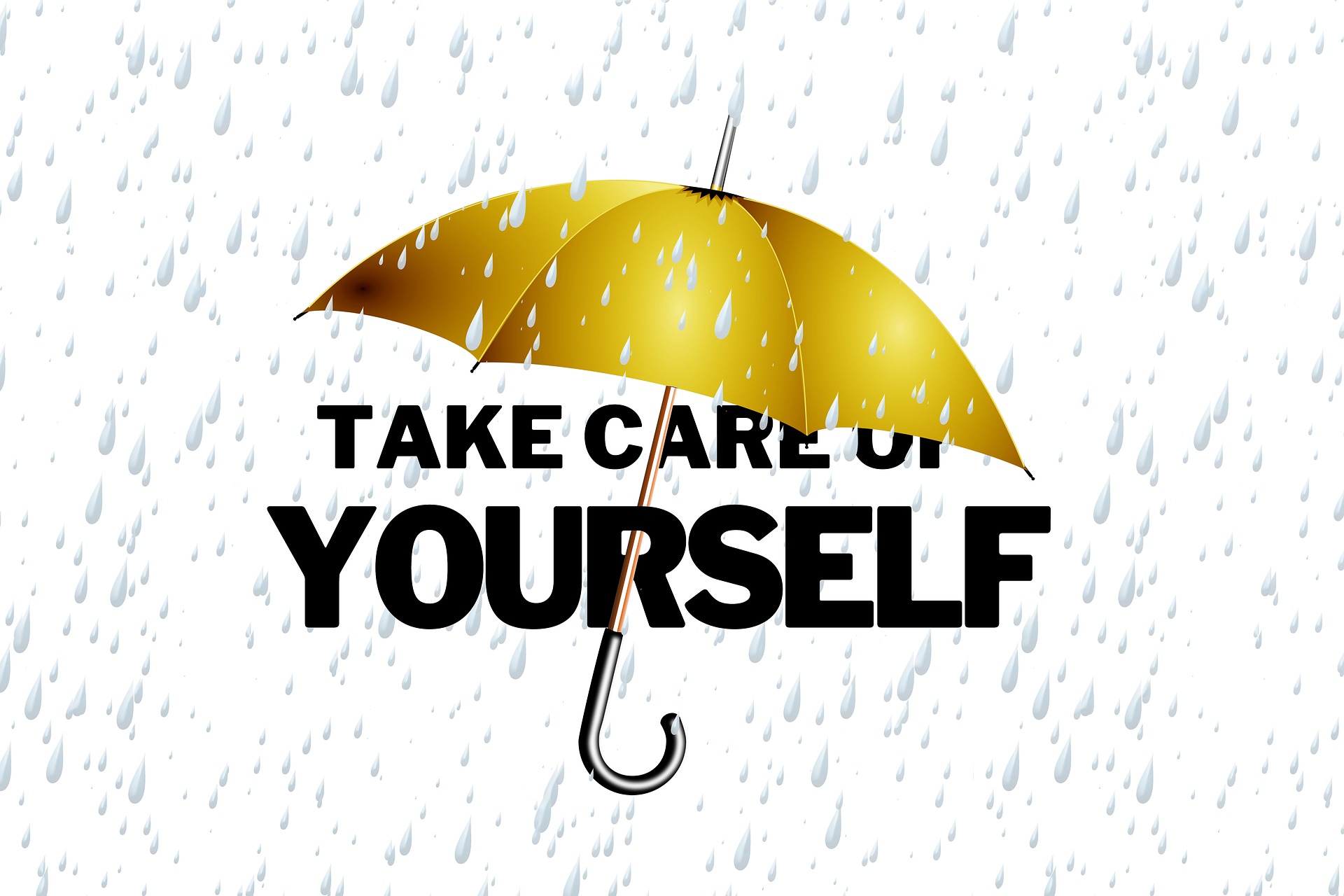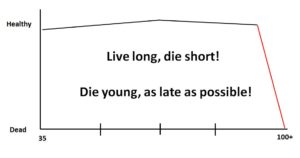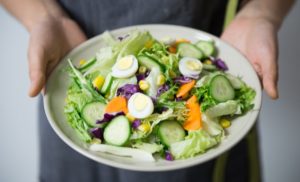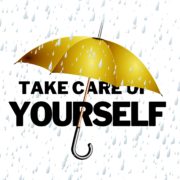The One Word That Is The Most Dangerous To Our Health

If you are 55 years old living in California and you just found out that 24-hour home care would cost you $18,000 per month should you need it, would you do something different today to avoid having to go there?
That number came from a veteran senior care professional in California I had a conversation with this week.
 Maybe $216,000/year just to have someone around 24×7 to feed you, clean you up and keep you on the planet is no big deal for you. But that would put you in a miniscule swath of the California population – or any state’s population, for that matter.
Maybe $216,000/year just to have someone around 24×7 to feed you, clean you up and keep you on the planet is no big deal for you. But that would put you in a miniscule swath of the California population – or any state’s population, for that matter.
Considering that most U.S. folks have accumulated, on average, about $100K by the time “retirement age” rolls around – well, do the math.
This gets more than a little freaky for all of us “peasants” out here.
Why do you need to know this?
Granted, California represents the extreme here, as they do in most everything. But even if the cost is half that much in your state, well the math still doesn’t eliminate the freaky.
My point in tossing out this unabashed scare tactic is to suggest that “it’s never too late to start and always too early to quit” when it comes to protecting yourself from the conditions that lead to this abhorrent situation.
My thesis is simple (and not original): reaching the point of needing someone 24×7 to prepare your gruel, wipe your fanny and tuck you in is, with some exceptions, a result of the insidious effects of harmful lifestyle habits.

Help your body help you
It’s a wonderful, amazing thing that our body’s 35 trillion cells somehow work in sync to sustain us despite our naivete about how they work and what they need. We have a 24x7x365 immune system working hard for us, despite our propensity to make that job difficult.
I’ll confess to that naivete. I flat out took all of that coordinated cell work for granted for the better part of six decades. Life was all about following the linear-life model and the cultural rules de jour through childhood and adulthood: striving, accumulating, comparing, competing, spending, playing.
That naivete included eighteen years of smoking and no attention to food types.
It wasn’t until my 73rd year that the insidious nature of lifestyle habits was really driven home. It was then, following a routine heart scan (my first ever) that I found out that I had an artery calcification score that, at least in numbers, put me in the high-risk category for cardiovascular disease. (You can read more detail of that part of my story here.)
 Fortunately, echo and nuclear stress tests revealed that artery occlusion was minimal and blood flow was normal. But it was a wake-up call. I realized that my inattention to diet to that point had contributed insidiously to the plaque buildup in my arteries despite years of exercise.
Fortunately, echo and nuclear stress tests revealed that artery occlusion was minimal and blood flow was normal. But it was a wake-up call. I realized that my inattention to diet to that point had contributed insidiously to the plaque buildup in my arteries despite years of exercise.
For 35 years at that point, I had been an avid exerciser. I hadn’t put any tobacco to my lips in 40 years. But I put my taste buds in charge and paid little attention to the foods I ate.
Insidious is a word that we should understand – and fear
The dictionary definition of insidious is “proceeding in a gradual, subtle way, but with harmful effects.” Synonyms include stealthy, surreptitious, deceitful, deceptive, underhand, backhanded.
Reflecting on my situation, I wish someone would have insisted that I understand the stealthy nature of many of my lifestyle habits.
My formative years were in the 1950s living in a rural area of Wyoming. Health habits were secondary to survival – we essentially “ate what we killed and grew”. And in Wyoming, there isn’t a whole lot you can grow.
Eggs, meat, and potatoes were the staples.
It was a time when smoking was promoted as healthy by doctors, dentists, actors, athletes and was even marketed featuring babies (gee Dad – you always get the best of everything – even Marlboro!). The warnings of the insidious nature of these habits were decades away.
Would I have adopted better habits had I been warned back then? Perhaps – but not likely. Like most, I suspect I would have stayed with the majority and forged on in the face of new advice to the contrary.
But insidious caught up with me. Just as it did – more severely – for an uncle and my dad. I watched both succumb to suffocation from emphysema as a result of 40+ years of smoking.
Reversing the effects of insidious habits
Just as we learned about the destructive nature of many of our habits, we have also learned that, in many cases, the destruction can be reversed.
For instance, I’ve been advised by my physician that after fifteen years of not smoking my lungs had recovered to that of a healthy non-smoker. I suspect, immodestly, that my lung power is well above average for a septuagenarian because of my aggressive aerobic exercise routine.
Another example is that of offsetting the insidious effects of sarcopenia, or loss of muscle mass. As I wrote about in my three-part series entitled “Aging Without Frailty”, loss of muscle mass is a condition that EVERYBODY begins to experience starting in their thirties with a dramatic acceleration commencing when we move into the fifties. It can be halted, and even reversed, through a disciplined exercise plan of resistance training/weight lifting.

Of particular interest to me following my heart scan revelation, was whether or not cardiovascular disease (CVD) can be reversed. Surprisingly, the response I got from my doctors was “no”. They agreed that the advance of the condition could be stopped but not reversed.
Further research revealed the contrary. Even cardiovascular disease has been shown to be reversible, although most doctors don’t take that position. Most notable of the doctors advocating for – and proving – CVD reversal are Dr. Dean Ornish and Dr. Caldwell Esselstyn. Both Ornish and Esselstyn have proven that a change to a plant-based diet joined with an aggressive exercise program can reverse CVD.
Esselstyn advocates a totally vegan diet with no oils, nuts or seeds. Ornish is less restrictive. Both have shown that the insidious build up of artery plaque can be reversed.
My calcification score motivated a diet change four years ago. I have become what author, journalist and food activist Michael Pollan calls a “flexitarian”. I found going totally vegan a bit much. I have virtually eliminated meat (I succumb to an occasional brat or do a “meat treat” meal infrequently) and dairy (almond milk is a healthy, tasty change from milk) and drastically increased the plant-based nature of my food intake.
Have I reversed my CVD? I don’t know – and am not really motivated to do another heart scan to find out. I am confident that the progression has stopped and I have experienced a serendipitous effect on the rest of my body as I have switched diets and intensified my exercise.
What’s insidious that is going on in your body?
You’ve crossed the 50 threshold, most likely thinking there are fewer days ahead than behind. Perhaps with visions of what you don’t want to end up like – warehoused, wheel-chaired, and withdrawn.
It’s a good time to do an inventory, a personal assessment with a view toward lifestyle changes that not only can extend your life but drastically reduce that period of extended morbidity that proceeds our inevitable decline into frailty and true old age. (See my April 15, 2019 article on this.)
I predict, should you choose to accept the assignment, that your assessment will reveal a surprising number of marginal lifestyle habits that, if reversed, can play a huge role in you maintaining vitality and vigor right up to the end – to “live long and die short” versus the “live short and die long” scene that still dogs our society.
We both know what the low-hanging fruit will be: diet and exercise.
We both know what will be the toughest: diet and exercise.
You’ve been hijacked
Admit it. Your taste buds have been held captive by our blameworthy food industry for decades. Breaking away from the fast and processed foods and their crafty combinations of sugar, salt, and fat produced by our huge and highly mechanized food industry is a big challenge.
Need a guide to start to turn the diet ship? For starters, I recommend investing the equivalent of two Carl’s Junior Bacon Cheese Thickburgers in a wonderful book by Michael Pollan entitled “Food Rules” in which you will find 64 rules on eating that are designed to steer you away from the Standard American Diet (appropriately called SAD). It’s a clever presentation of the steps we can take to eliminate processed “edible food-like substances” and move toward a diet built around the mantra Pollan is noted for:
 “Eat food, not too much, mostly plants”.
“Eat food, not too much, mostly plants”.
Exercise – the life extender
The late Dr. Henry Lodge, co-author of the transformational book “Younger Next Year” issued a succinct and profound statement in the book that can serve as a motivational guide for an exercise plan. He stated:
“Aerobic exercise will give you life. Strength-training will make it worth living”.
That statement alone has inspired me to the regimen that is now my weekly exercise discipline:
- Aerobic exercise for 45 minutes, 6 days a week with my heart rate at the top end of my exercise heart rate range of 93-121 beats/minute.

- Aggressive strength training with free weights and machines three days a week.
Join me in declaring “insidious” your enemy and working to eliminate the habits in which it thrives. The changes are pretty simple but not easy because the habit patterns are decades deep in their entrenchment. And there are powerful “stealth” elements out there that aren’t on our side in making those habit changes. Our food industry and healthcare system are at the top of that list.
We exist in a culture in which our food industry doesn’t care about our health and our health care system doesn’t care about what we eat.
We’re pretty much on our own with our choices. Informed decisions result in better choices. And better choices, even now at 55 or beyond, can make for a longer and better life.
What lifestyle changes have you made to extend your good health? We’d love to hear your story. Leave a comment below – or email me at gary@makeagingwork.com.
Also, if you haven’t, subscribe to our weekly newsletter at www.makeagingwork.com and receive a copy of my free ebook entitled “Achieve Your Full-Life Potential: Five Easy Steps to Living Longer, Healthier, and With More Purpose.”





Another good one Gary! Hope you had a Happy 4th!
Thanks Chip. I appreciate your continued support and feedback.
Flexitarian. I like that. I tried the vegan diet for a few months but couldn’t sustain it. Too few choices, too much work. Thanks for the overview and for the reminder about strength training. I’ve got to start that!!
Howard, great to hear from you. I really encourage you to start build some serious weight training into your weekly routine. Go to this link https://strongpath.com/videos/ and find a podcast recording by Fred Bartlitt on Aging Unmasked. It’s important insight into the insidious nature of sarcopenia.
Was reading this to my wife and she was quoting same authors. Her goal is age 120. We have slowly turned insidious Titanic by 20 years of daily cardio (1 to 2 hrs) and rowing along with other strength builder routine. But it has been the diet change of daily “big” lunch salads for 20 years to full Vegan these past 2 years that has had a profound change. Oh and did I mention we stopped sucrose (simple sugars) for 4 years now.(no breads, pastas, etc) Nothing packaged, processed or added. Our kitchen and freezer are wide variety of plant based recipes for life. Lastly, we invest daily time preparing vegan meal recipes like our lives depend on it. Because, well,…. it does.
Mike, great example of taking charge of your lifestyle. Thanks for sharing the specifics. I’m sure that setting a goal to live to 120 has met with a lot of raised eyebrows and maybe some derisive laughter. I get it – I’ve been dealing with that for the 10 years or so that I’ve been saying I intend to live to 100. I’ve now revised it to 112.5 so it hasn’t gotten any better. I’m with you both – you may not get to 120, but if you didn’t set the goal, you’d have zero chance to get there. Self-fulfilling prophesy, right. Thanks for setting a great lifestyle example and for sharing the impact your decisions have had.
I have been lucky and so have you in that I have not injured myself or gotten a disease at age 76. I have been active since college and continue today except I had to stop running because of a herniated disk in my neck. In addition, it has caused me to avoid excessive jolting or weight lifting as I will develop pain in my arms. I have also been active in hiking and racewalking resulting in hamstring problems and and a torn quad. I think you can continue until the old body starts giving up. I have not let the “old man in” but not everyone is lucky as we get older. I do believe genes have 50% to do with it and life style the rest.. My dad lived to 96 and never exercised after he retired from the farm and he smoked until he was 75.
I have never smoked but have been an exercise nut. But I also realize that may not last forever. Many of my friends have had cancer or heart problems.. You can do all the right things and that doesn’t stop dementia or disease. I will continue to exercise because I like to. Most people don’t exercise because they are lazy and hate it or they make some kind of excuse like it gives them pain or they don’t care. As in most things in life if you think you can you can and if you think you can’t you can’t…..
Hello there, I found your blog via Google while searching for a related topic, your website came up, it looks great. I’ve bookmarked it in my google bookmarks.
Dear makeagingwork.com webmaster, You always provide key takeaways and summaries.
Hello makeagingwork.com owner, Your posts are always well-received and appreciated.
Hello makeagingwork.com administrator, Thanks for the valuable information!
Hello makeagingwork.com administrator, Your posts are always interesting.
Hmm it seems like your website ate my first comment (it was super long) so I guess I’ll just sum it up what I had written and say, I’m thoroughly enjoying your blog. I as well am an aspiring blog writer but I’m still new to the whole thing. Do you have any tips for rookie blog writers? I’d certainly appreciate it.
Dear makeagingwork.com administrator, Your posts are always thought-provoking and inspiring.
Hello makeagingwork.com owner, Your posts are always a great source of knowledge.
Hello makeagingwork.com webmaster, You always provide key takeaways and summaries.
To the makeagingwork.com webmaster, Your posts are always well-supported and evidence-based.
To the makeagingwork.com admin, Thanks for the detailed post!
To the makeagingwork.com admin, Your posts are always well-supported and evidence-based.
Hi makeagingwork.com owner, Your posts are always well written and informative.
Hi makeagingwork.com admin, You always provide great insights.
Hello makeagingwork.com admin, Your posts are always well-referenced and credible.
Hi makeagingwork.com owner, Thanks for the well-researched post!